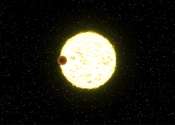New exoplanet detection program for citizen scientists
The SETI Institute and its partner Unistellar are launching a new exoplanet detection program that will engage citizen scientists worldwide. Amateur astronomers, using either Unistellar's eVscope or another telescope, will ...









